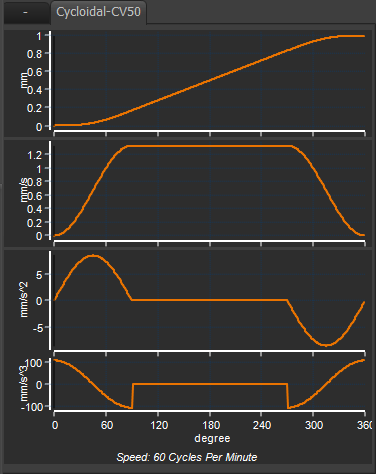A Traditional Motion-Law. Use the Ramp Motion-Law to design a Cycloidal-CV50.
The Cycloidal-CV50 has three phases:
•Phase 1: Acceleration : first ½ wave of a Sine function : 25% of the Segment-Width.
•Phase 2: Zero Acceleration, Constant Velocity : 50% of the Segment-Width.
•Phase 3: Deceleration : last ½ wave of a Sine function : 25% of the Segment Width
A motion with continuous Velocity and Acceleration, from start to end, The Jerk is finite at its start and end.
Its peak Acceleration is quite high, but its peak Velocity is quite low.
|

